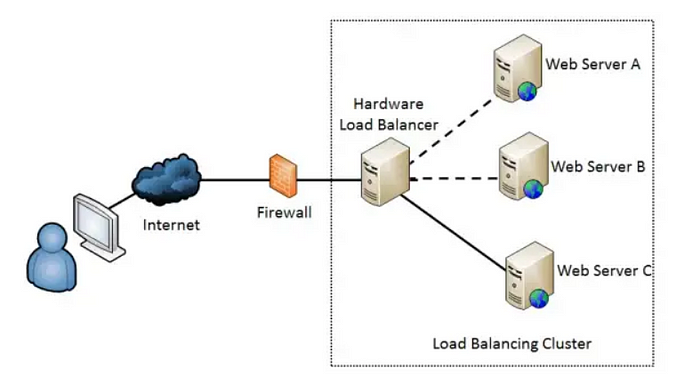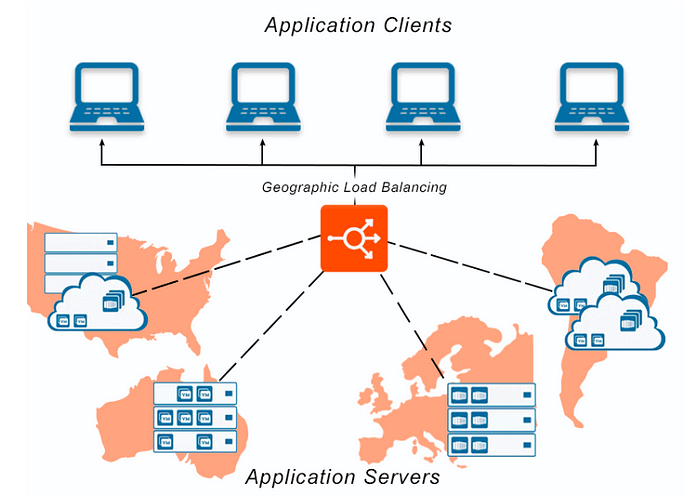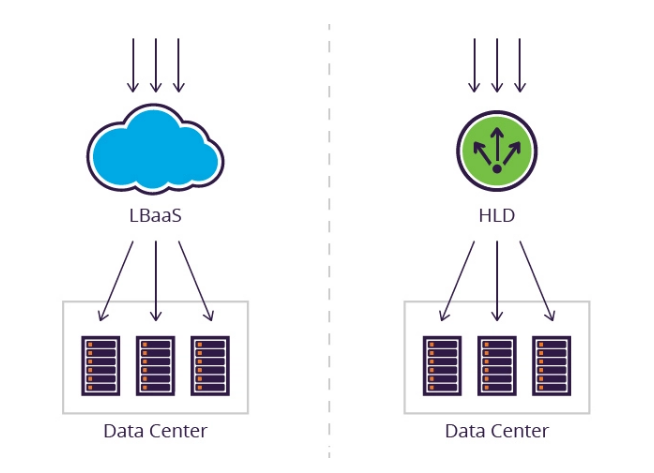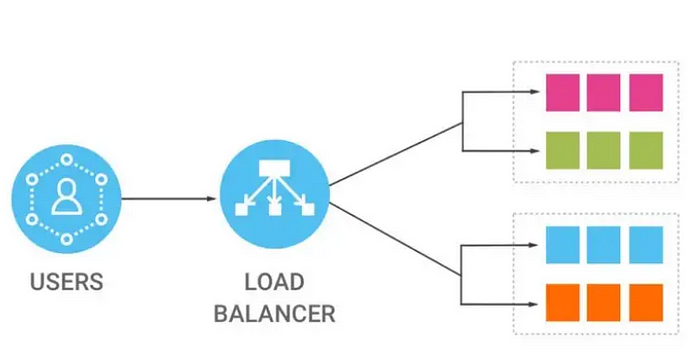Load Balancing In System Design | SDE Interview

Load balancing is a technique used in computer networks to distribute workloads evenly across multiple servers or resources to maximize throughput, minimize response time, and avoid overloading any single resource. Various methods can accomplish this, including round-robin, least connections, and IP hash.
Types of Load Balancers
One of the simplest and most common forms of load balancing is round-robin. In this method, requests are distributed in a cyclical fashion to each server in a pool of servers. For example, if there are three servers in the pool, the first request will be sent to the first server, the second request will be sent to the second server, the third request will be sent to the third server, and the fourth request will be sent again to the first server, and so on. This ensures that each server in the pool receives an equal number of requests and, thus, an equal workload.
Another common load balancing method is the least connections, in which the load balancer sends requests to the server with the least number of active connections. This method is useful in scenarios where one server is significantly more powerful than the others and can handle more connections.
Another method is IP hash. It is used to send a request from a particular client to the same server each time; this method uses the IP address of the client as a key to determining which server should handle the request. This can be useful for maintaining a session state, for example, if a user is logged in to a web application and their session is stored on a specific server.

In addition to these methods, specialized load-balancing techniques can be used in specific situations. For example, content-based routing can be used to direct requests based on the content of the request, such as the URL or the user agent. This can be useful for routing requests to different web application parts or sending mobile traffic to a different server than desktop traffic.
Another specialized technique is geographic load balancing, which is used to direct requests to the server that is geographically closest to the client. This can be done by using the client’s IP address to determine their location or by using a content delivery network (CDN) to distribute requests to the nearest edge server.

Load balancers can also be implemented in hardware or software, depending on the needs of the network. Hardware load balancers are typically more expensive but offer higher performance and are better suited for larger networks. On the other hand, software load balancers are more cost-effective and can be easily integrated into existing networks.

Overall, load balancing is an important technique for ensuring the performance and reliability of computer networks. By distributing workloads evenly across multiple servers or resources, load balancing can improve throughput, minimize response time, and prevent any single resource from becoming overwhelmed. This can help ensure that networks remain available and responsive to users at all times.
It is important to notice that load balancing is not a single solution to increase the availability and scalability of a system; it must be paired with other techniques like auto-scaling, failover, and monitoring to have a robust and resilient infrastructure.

Conclusion
In conclusion, load balancing is critical for building a robust and reliable computer network. It helps to distribute workloads evenly across multiple servers or resources, improving throughput, minimizing response time, and preventing any single resource from becoming overwhelmed.
By using techniques such as round-robin, least connections, and IP hash, load balancers can ensure that networks remain available and responsive to users at all times. Additionally, specialized load-balancing methods such as content-based routing and geographic load balancing can be used to handle specific situations.
Load balancers can be implemented in both hardware and software, depending on the needs of the network. However, it is important to remember that load balancing is not a single solution, it must be paired with other techniques like auto-scaling, failover and monitoring to have a robust and resilient infrastructure.
That’s all 👍🏼.
Thanks 🤗.
Want to Hire/Connect? LinkedIn
P.S.: If you like this uninterrupted reading experience on this beautiful platform of Medium.com, consider supporting the writers of this community by signing up for a membership HERE. It only costs $5 per month and helps all the writers.
A clap would be highly appreciated if you liked what you just read. You can be generous in clapping; it shows me how much you enjoyed this story. And if you didn’t like it? Please do comment😋!
